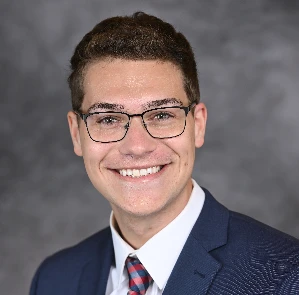3057 - Racial and Ethnic Diversity in the Radiation Oncology Pipeline: A Comparative Analysis of the US Cancer Population, Medical School Matriculants and Radiation Oncology Residency
Presenter(s)

D. Haner Wasserstein1, A. Huang1, C. A. Toal1, S. Windisch1, J. Ansell1, M. Darrell2, and M. Etienne3; 1New York Medical College, Valhalla, NY, 2Albert Einstein College of Medicine, Bronx, NY, 3Department of Radiation Neurology, New York Medical College, Valhalla, NY
Purpose/Objective(s): Previous studies have demonstrated that racial diversity among providers within the field of Radiation Oncology (RO) is lacking compared to that of medical school (MS) matriculants and the United States (US) cancer population. Diversity in the physician workforce is associated with higher quality of care, improved provider retention, and better health outcomes. This study aims to explore if racial diversity among MS matriculants and RO residents is catching up to the US cancer population.
Materials/Methods: Data from the following resources were used to assess racial and ethnic disparities among the US population, MS matriculants, and RO residents: American Association of Medical Colleges, US Census Bureau, National Institutes of Health Surveillance, Epidemiology, End Results (NIH SEER) program, and the Accreditation Council for Graduate Medical Education Data Resource Book. RO resident and US cancer population data (2011-2022) were analyzed. MS matriculant data (2007-2018) were examined to align with residency program entry timelines. The US cancer population was estimated using NIH SEER and US Census data. Annual percent change, two-sample proportion tests, and correlation coefficients were used to compare trends.
Results: From 2011 to 2022, individuals traditionally underrepresented in medicine (URiM)—including Black, Hispanic, American Indian, Alaska Native, Native Hawaiian, and Pacific Islander populations—accounted for 26.2% of the total US cancer population, 14.7% of MS matriculants, and 6.8% of RO residents. The representation of individuals traditionally URiM increased annually by an average of 1.8% in the US cancer population, 6.9% among MS matriculants, and 5.2% among RO residents. Growth trends for MS matriculants and RO residents showed strong correlations with those in the cancer population (r = 0.80 and r = 0.77, respectively). However, these associations were not statistically significant and indicate that the gap between URiM within the US cancer population and radiation oncology is not diminishing.
Conclusion: Historically marginalized groups continue to be underrepresented in both medical school matriculants and RO residents when compared to the US cancer population. Despite efforts to improve this disparity over the last ten years, underrepresentation is not diminishing. Additional research and efforts, such as pipeline programs, are needed to improve racial diversity in RO residency programs and medical schools to serve an increasingly diverse US population.
